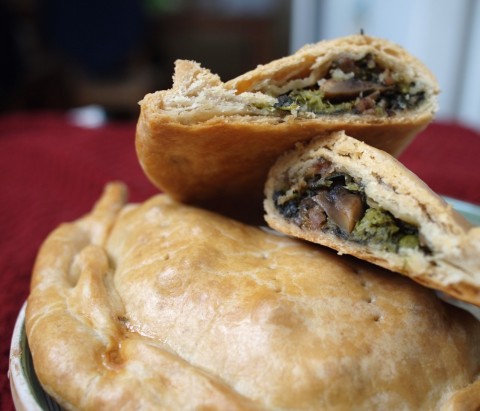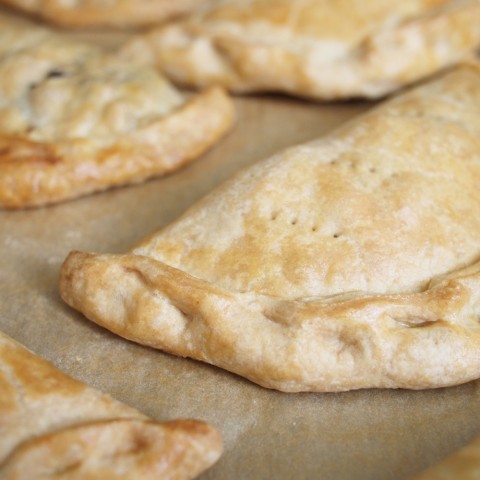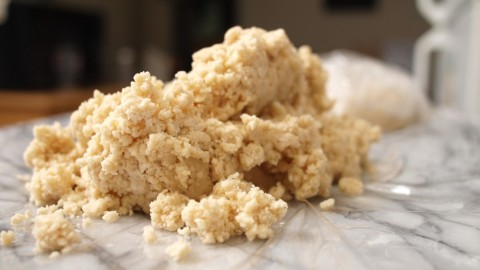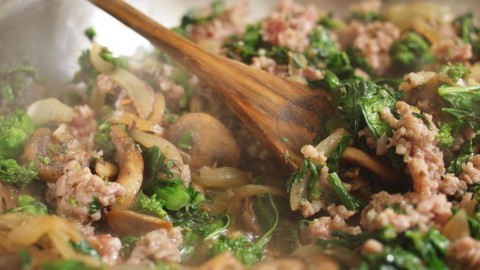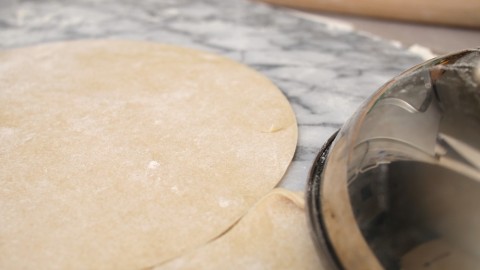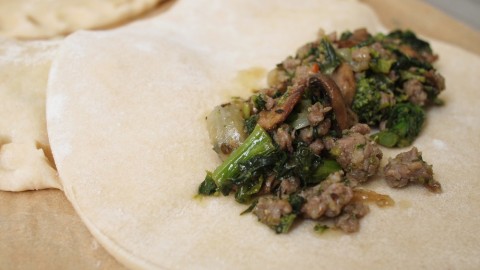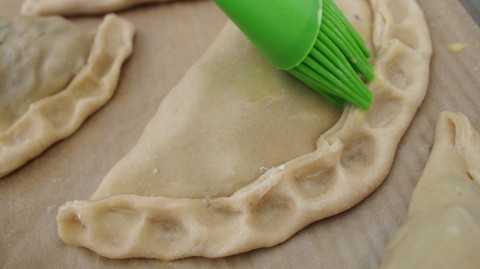I’d like to begin by assuring you all that this post in no way promotes cannibalism. Nor cattibalism, neither. It seems as though, as with my quiche lorraine, a great deal rides on a name. And while an empanada might be perfectly innocent, and while a Cornish pasty might pass with little more than a blush and a raised eyebrow, a meat pie is a horse of a different feather.
A meat pie carries behind it all the force of Mrs. Lovitt’s pie shop, all the force of Stephen Sondheim’s Demon Barber, and through that, all the suspect ingredients, filth, and kitty bits of the back alleys and lanes of Victorian London. We all know, because Mrs. Lovitt says so, that usual fare in such a pedestrian Victorian treat is only pussycats and toast — that beef is expensive, and mutton smells, and dog is stringy, and, well, it only gets worse from there.
We all know, too, that in her case, the obvious solution to such an unappetizing conundrum is a little priest, perhaps. Or a poet, a royal marine, or — hope of hopes — a judge!
We all know that — far from the stately empanada — meat pies simply must be treated with a maximum of circumspect suspicion. They may be eaten, but only by the weary or the desperate. (Oh, I say!)
Thing is, all that is a story told by the upwardly aspiring, looking down their collective noses at the people in the street, spitting backward over their shoulder. Sweeney himself, after all, puts the underlying democracy of the meat pie in perspective when he sings:
The history of the world, my love
is those below serving those up above!
How gratifying for once to know
that those above will serve those down below!
He means something entirely unsavory by those words, of course. (There are, I insist, no cannibals here!) But that does not mean, in broad strokes, that he is wrong. As I wrote last year about pasties, the meat pie has a lot to offer to folks who work for a living. Wrapped in a flaky pastry crust, it goes in the oven in the morning, and stays hot like a rock in a miner’s pocket until lunchtime, even if said time occurs some distance beneath the ground.
Meat pies are people’s food, they’re street food, they’re sometimes — even today in the UK — fast food. And so of course they have a bit of a shaky reputation.
But just because they started as a working lunch, and just because they might — and this is a very remote possibility — be filled with your friends and neighbors, that is no reason at all to disdain them.
The fact is that meat pies are delicious. They’re versatile, and easy to fill to suit a wide variety of tastes. And on this side of the pond, where we neither see them under heat lamps in the airport, nor have homegrown suspicions, they do in fact make an impressive option for feeding large numbers of guests in a non-sit-down fashion.
Eat up!
For the Crust:
5 cups Unbleached AP Flour
4 Sticks of Unsalted Butter, chilled and cubed
12 tbsp Water, chilled (this is about 3/4 of a cup)
2 1/2 tsp Salt
1 Egg, beaten (for brushing on the finished pies)
For the Filling:
1 lb Loose Sausage (I used Italian from my CSA, but any ground meat will do)
1 lb Broccoli Rabe, chopped fine
1 Package of White Mushrooms, sliced
1 Small Onion, sliced
1 tsp Dried Oregano
1 tsp Cumin Seeds
1/2 tsp Dried Thyme
Thai Fish Sauce
Olive Oil
Pepper
Salt
To make the crust: To the work bowl of a food processor, add the flour and salt, and pulse once or twice to make sure that it is all sifted together thoroughly. Add the chilled, cubed butter, and pulse again, in five-second intervals, until it is thoroughly integrated and the mixture is the consistency of sand. Then add the water, half at first and then more as necessary, pulsing the food processor until the mixture just barely comes together into a dough.
A quarter at a time, remove the dough from the food-processor work bowl, onto a stretched sheet of plastic wrap. Making sure not to work it too much, shape each piece into a flat, round puck, wrap, and chill in the refrigerator for an hour.
(if your food processor is like mine, and there isn’t quite enough room for five cups of flour, making your shortcrust half at a time is a totally acceptable way to go.)
To make the filling: Heat some olive oil in a sauté pan over medium flame. When it is hot, add the mushrooms and a little bit of salt, and cook for about ten minutes, until they are almost done. Then add the onion, thyme, cumin, and a touch more salt, and continue cooking until the onion has softened.
Break the loose sausage into small chunks and add it to the pan, stirring continually. As it cooks, further break it up until it is the consistency of ground beef. When the sausage is almost done, mix in the broccoli rabe, oregano, about thirty grinds of pepper, and a generous helping of fish sauce (or more salt, if you don’t have any). Place a lid on the pan, and allow the rabe to steam for about five minutes.
At the end of that time, remove the lid and cook the filling for another ten minutes or so, until most of the liquid has evaporated away. Remove the sauté pan from the flame, and set aside to cool before filling the pies.
Putting it all together: Preheat the oven to 400F, and line two cookie sheets with parchment.
One puck at a time, remove the dough to a floured board, and roll it out like a pie crust. Using an 8″ pastry cutter (or an appropriately-sized bowl and a sharp knife, which is what I did), cut out rounds and set them aside. You should be able to roll each puck of dough out twice successively before it develops too much gluten to be easily handled. And in total, across all four pucks, you should get at least twelve shortcrust rounds.
To fill the pies, place about three tablespoons of meat mixture into the center of each round. Dip your finger in cold water, and run it around the lip of the crust. Fold the crust in half over the filling, and pinch the edges together, making deep imprints with your fingers. Then fold the edge up over itself, and pinch together a second time.
Carefully move the formed meat pies to the cookie sheets. Brush a thin coating of beaten egg over the top of each. Then puncture each pie a couple of times with a fork, move the cookie sheets to the oven, and bake for 35-40 minutes, until the crusts are a golden brown.
These pies are excellent served hot or cold, and can be easily reheated in a 250F oven. If you have the freezer space and want to save some for later, I would recommend forming the pies, then freezing them on a cookie sheet without puncturing them or brushing them with egg. I have not tried it myself, but I imagine that, once they are frozen, they can be stored successfully in gallon freezer bags. And that they can go directly from freezer to oven, as needed.
